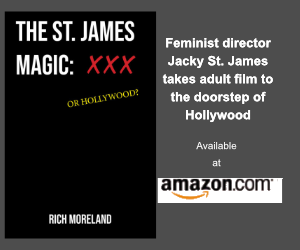by Amy Davis, October 2016
I’m taking a break for the next few days and handing over to my social media person the treat, if you will, of posting her thoughts on feminism in film.
Amy’s been with me for awhile, initially as a research assistant and reader for my first book. She does some writing on her own and with the upcoming posts explores female empowerment in the horror genre.
Yours truly added a bit of editing and will introduce each of the posts over the next few days.
So enjoy and learn something new!
Rich
* * *
As Halloween approaches I’d like to talk about a film genre that is too often classified as misogynistic and anti-woman: horror.
At its core, the horror tradition holds puritanical values especially if the films have supernatural themes. For example, characters messing with black magic, Ouija boards, or other methods of contacting the dead will soon find themselves among them. Likewise, the mad scientists or magic makers reanimating corpses while ignoring local superstition will see the pitchfork crowd destroy their work.
And if that’s not enough, they often face death themselves as the film closes.
 In other words, playing God does not work in horror because the message is clear: science is the downfall of those who use it. Mary Shelley’s classic Frankenstein is a prime example of this anti-science theme.
In other words, playing God does not work in horror because the message is clear: science is the downfall of those who use it. Mary Shelley’s classic Frankenstein is a prime example of this anti-science theme.
Not until the horror narrative blends with science fiction does the focus shift to science as savior, a trope that runs through much of horror cinema popularized in the 1940s and the atomic-age classics of the 1950s.
While these films use science for the horror element (aliens, giant bugs, etc.), the populace often runs to their local oddball scientist for help.
So science becomes good versus evil in an age of unthinkable annihilation. In other words, technology causes the crisis and can also solve it. The Invisible Man’s Revenge (1944), Them! (1954), and The Blob (1958) are famous offerings in this nuclear age subgenre.
By the 1970s and 80s, horror is modernized but still reflects the folktale themes popular in the pre-World War II days when Dracula, Frankenstein’s monster, and werewolves were standard fare.
This new wave of films means that the typical ghost story or evil powers tale like The Omen, The Blair Witch Project, and Rosemary’s Baby competes with a new element, the urban legend and the demented weirdo of the slasher film.
In the posts of this series, the slasher product is our central focus with a preference for the horror feminist and the archetypes that emerge around her.
The Dichotomy
Here’s how the slasher genre works using a frequently repeated theme. Young people, usually teens or college students, escape supervision so they can drink, do drugs, and have sex. Unfortunately, all this “partying” becomes an automatic death sentence, much to the delight of the audience. In other words, the puritanical values reinforced in Hollywood film from the 1930s through the 1960s are still around and deviant behavior that violates society’s conservative norms must be punished.
While at their core these anti-social activities conflict with society’s predominant religious values, over the years modern audiences have become younger and more progressive. To get a broader range of people into the theaters, things had to change. The emergence of the strong female character was a major update.
 We normally don’t view the perversities in horror as conduits for pro-woman empowerment but that is the dichotomy of the genre. Though films like Blood Feast (1963), Bloodsucking Freaks (1976), and Snuff (1976) were condemned for their treatment of women, they became more enticing for moviegoers because of their perverse eroticism.
We normally don’t view the perversities in horror as conduits for pro-woman empowerment but that is the dichotomy of the genre. Though films like Blood Feast (1963), Bloodsucking Freaks (1976), and Snuff (1976) were condemned for their treatment of women, they became more enticing for moviegoers because of their perverse eroticism.
Some critics claimed women were there to die a violent death, which wasn’t completely untrue. To be fair it’s a horror film and most characters, male or female, die anyway.
Stereotype
Most of the time when a horror film focuses on a group of young people it is evenly distributed between the sexes so that “hooking up” flavors the story line. The result is men are more likely to exit the scene early when the slaughtering wacko shows up. The boys will always go check out the strange noise alone, for example.
This plays into the stereotype of the male ego as a counterpoint to the frail female as can be seen in the old urban legend about the hook-handed killer.  The girl would not leave the car or fornicate because she swore she heard something eventually causing her frustrated boyfriend to check it out. For her it’s safety first. In fact, most horror films have a female survivor that lasts until the closing credits.
The girl would not leave the car or fornicate because she swore she heard something eventually causing her frustrated boyfriend to check it out. For her it’s safety first. In fact, most horror films have a female survivor that lasts until the closing credits.
As a result, the “survivor girl” emerges as a catchall for any woman who lives to the end. While she is a modern staple in horror, she is not alone.
Other females designed to fit the plot line are the mother, the revenge killer, and the female killer, with some of them taking on the characteristics of feminism.
We begin with the “survivor girl,” a shift that starts in the feminist-oriented 1970s when the female fighting to live becomes commonplace. However, despite being updated, the survivor girl remains an oversimplification in an often-oversimplified genre.


